Insects evolved around 480 million years ago, around the same time as the earliest land plants. Today, they represent more than 90 percent of the animal life forms on Earth. They are in many different body shapes and sizes. Here are the top 10 largest insects in the world.
List of Largest insects in the world [by total body length]
10. Giant Water Bug: up to 12 cm (4.7 inches)
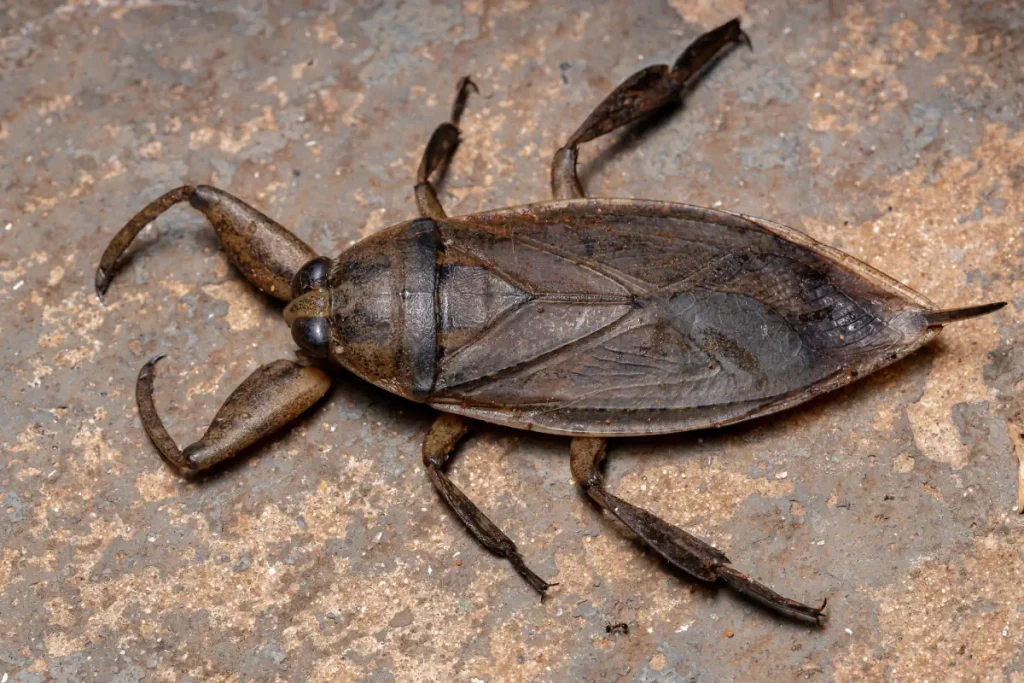
Giant Water Bug (Belostomatidae) is a family of freshwater hemipteran insects. They are colloquially known as toe-biters, Indian toe-biters, electric-light bugs, alligator ticks, or alligator fleas (in Florida, US). They are the largest insects in the order Hemiptera, and occur worldwide, with most of the species in North America, South America, Northern Australia, and East Asia.
They are typically encountered in freshwater streams and ponds. Most species are relatively large, typically at least 0.75 in (2 cm) long, although smaller species also exist. The largest are members of the genus Lethocerus, which can exceed 4.75 in (12 cm) and nearly reach the length of some of the larger beetles in the world. Giant water bugs are a popular food in parts of Southeast Asia.
9. Elephant beetle: up to 13 cm (5.1 inches)
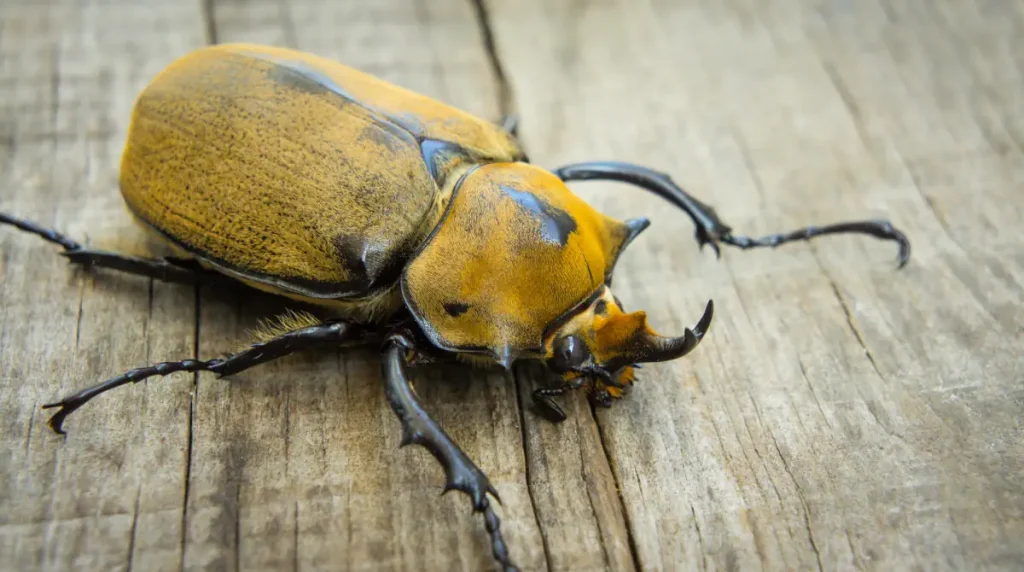
The elephant beetle (Megasoma elephas) is a rhinoceros beetle belonging to the Scarabaeidae family. The males can grow up to 13 cm (5.1 in), but females are 2-3 times smaller. They are actually black in color and covered with a coat of fine microscopic hairs. They are located in southern Mexico, Central America, and South American rainforests.
8. Atlas beetle: up to 13 cm (5.1 inches)
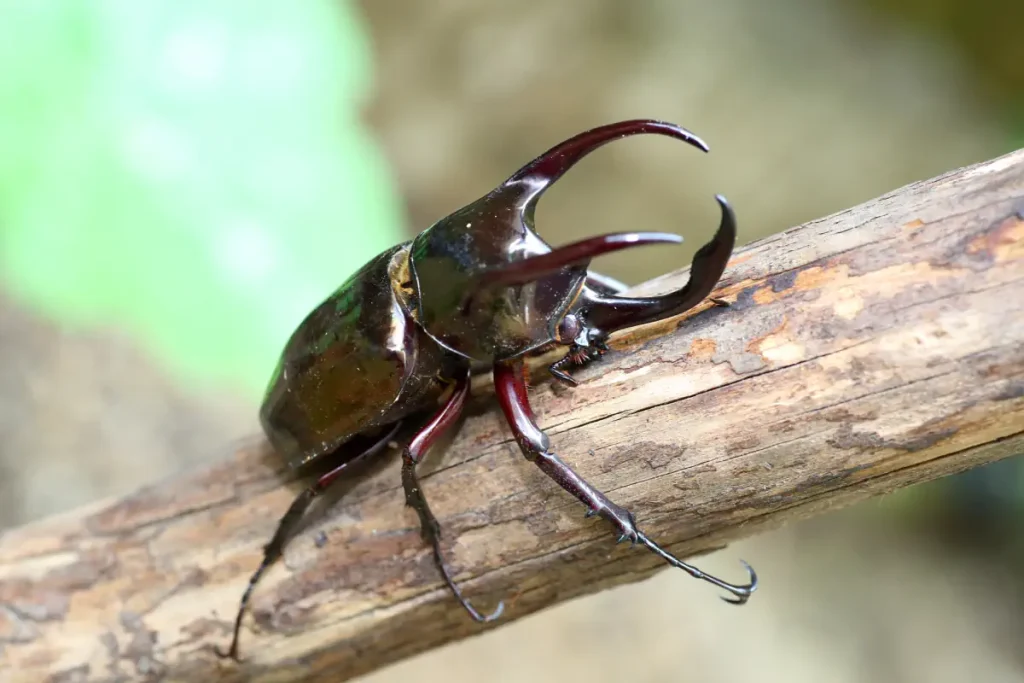
The Atlas beetle (Chalcosoma atlas) is a species of rhinoceros beetle (Scarabaeidae family). It is named after Atlas, a Titan condemned to hold up the sky for eternity in Greek mythology. The males are larger than the females, reaching a length of up to 13 centimeters (5.1 in).
The larva of the Atlas beetle is known for its fierce behavior, including biting if touched. Unverified reports exist of larvae that live together fighting to the death if there’s not enough space or food.
Atlas beetle lives in southern Asia, especially Indonesia.
7. Actaeon beetle: up to 13.5 cm (5.3 inches)
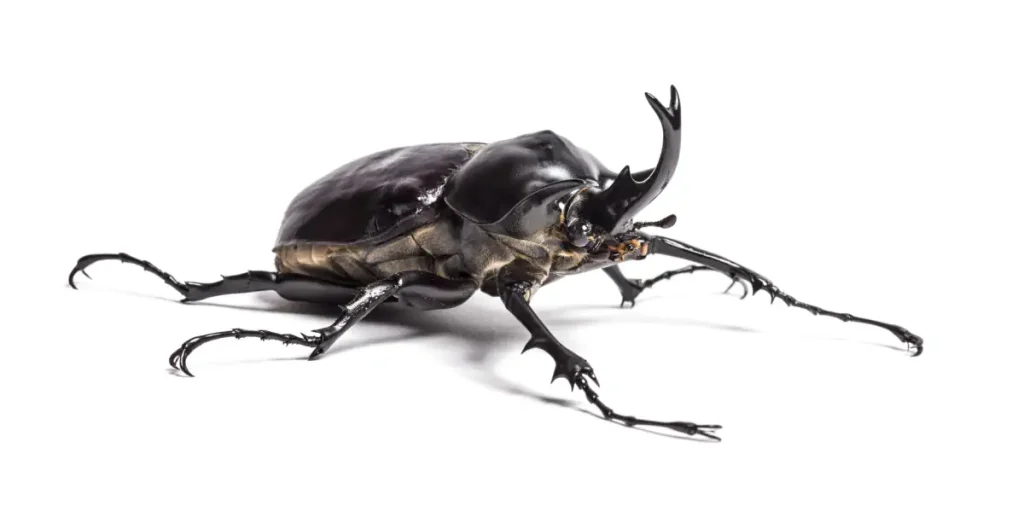
The Actaeon beetle (Megasoma actaeon) is also a rhinoceros beetle belonging to the Scarabaeidae family. It is named after Actaeon, a famous Theban hero in Greek mythology. As mentioned above, with a large, bulky body, it is one of the largest of all beetles, measuring up to 7 centimeters (2.8 in) across, with a body length of about 5-12 centimeters (2.0-4.7 in).
The males can grow to be 13.5 cm (5.4 in) long by 4 cm (1.6 in) thick. This species can be found in South America, particularly in Bolivia, Brazil, Colombia, Ecuador, French Guiana, Guyana, Panama, Peru, Suriname, and Venezuela.
6. Giant longhorn beetle: up to 15 cm (5.9 inches)

The females of the giant longhorn beetle reach a length of 70-80 millimeters (2.8-3.1 in) and males 110-120 millimeters (4.3-4.7 in), but specimens up to 150 millimeters (5.9 in) have been captured.
The giant longhorn beetle can be found in Argentina, Colombia, French Guiana, Guyana, Venezuela, Trinidad & Tobago, Ecuador, Peru, Brazil, Bolivia, Paraguay, Panama, and Suriname.
5. Titan beetle: up to 16.7 cm (6.6 inches)

The Titan beetle (Titanus giganteus) is widely rated as the largest insect in the world. The largest reliable measured specimen was16.7 cm (6.6 in) in length. Several 18+ cm specimens are reputed/alleged to exist, though.
The titan beetle is comparable to such beetles as the Hercules beetle and the Macrodontia cervicornis. But the Hercules beetle males have an enormous horn on the pronotum or thorax making up around half of its total length. And also Macrodontia cervicornis’ length due to the enormous mandibles. As such, the body of the Titan beetle is considerably larger than that of the Hercules beetle and the Macrodontia cervicornis.
The Titan beetle is one of the most mysterious creatures on Earth. It lives unobtrusively deep in some of South America’s hottest tropical rainforests of Venezuela, Colombia, Ecuador, Peru, the Guianas, and north-central Brazil, and only ventures out when seeking out mates. The larvae of this amazing insect have never been found.
4. Hercules beetle: up to 17 cm (6.7 inches)
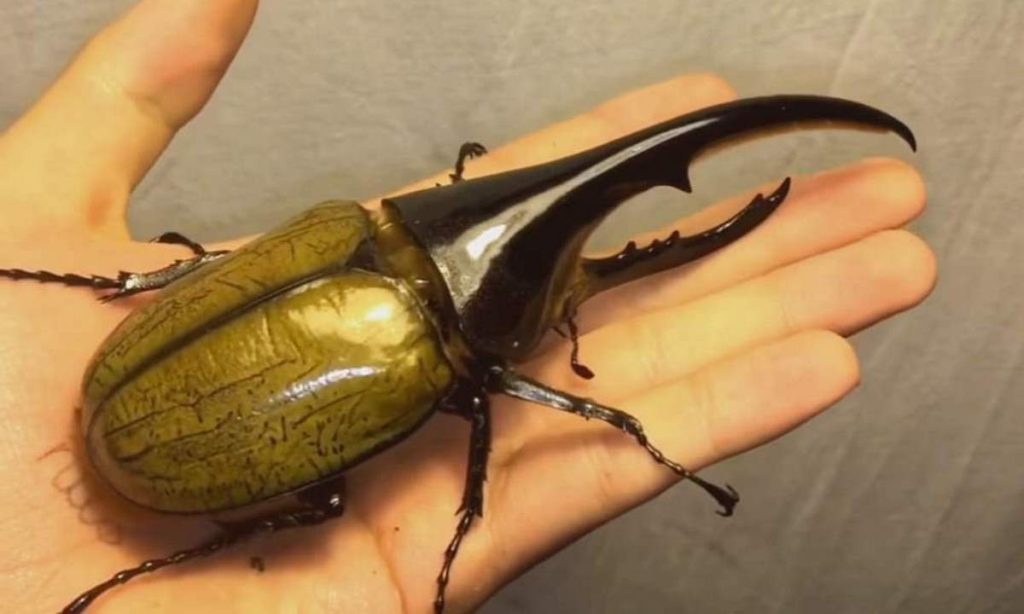
The Hercules beetle (Dynastes hercules) is the most famous and the largest of the rhinoceros beetles. They can grow up to 17 cm (6.5 in), but as mentioned above, half of this length comes from the enormous horn.
Hercules beetles are highly sexually dimorphic, with the females generally being larger-bodied but much shorter, as they lack horns entirely, so much smaller by the overall length.
Anecdotal reports exist of the Hercules beetle being able to carry up to 850 times its body mass, but actual measurements on a much smaller (and relatively stronger: see square-cube law, see notes 2) species of rhinoceros beetle show a carrying capacity of only up to 100 times their body mass, at which point they can barely move.
3. Macrodontia cervicornis: up to 17+ cm (6.7+ inches)
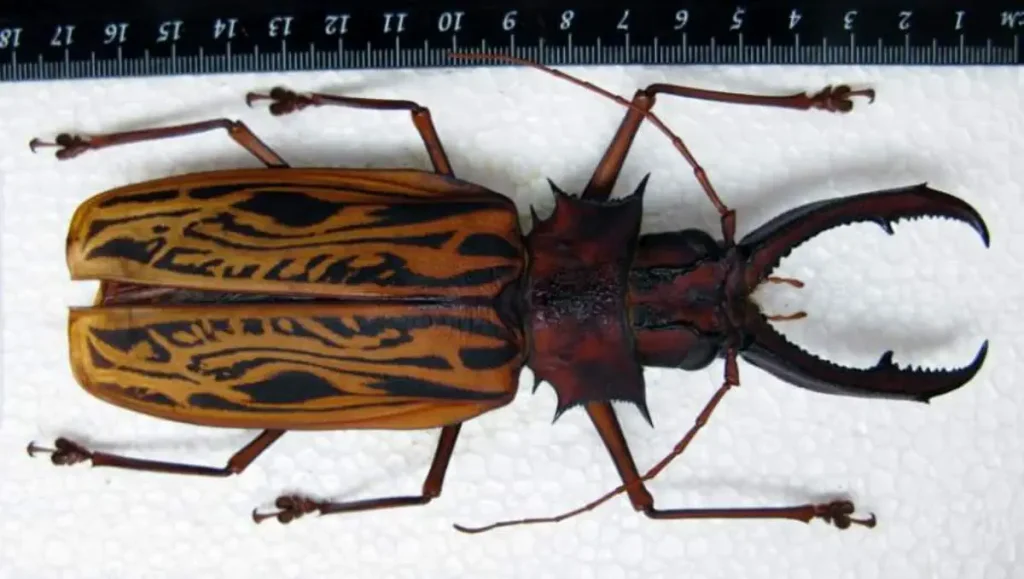
Macrodontia cervicornis is one of the largest beetles, with known specimens exceeding 17 cm in length. Part of this length is due to the enormous mandibles, from which it derives both of the names in its binomen: Macrodontia means “long tooth”, and cervicornis means “deer antler”.
It is also known as the “Sabertooth Longhorn beetle”. Most of this species’ life is spent in the larval stage, which can last up to 10 years, and the larvae of M. cervicornis are extremely large, reaching up to 21 cm (8.2 inches) in length.
Macrodontia cervicornis is known from the rain forests of Colombia, Ecuador, Peru, Bolivia, the Guianas, and Brazil. Additional described species in the genus extend the overall range of the genus from Guatemala to Argentina.
2. Praying Mantis: Up to 18 cm (7 inches)
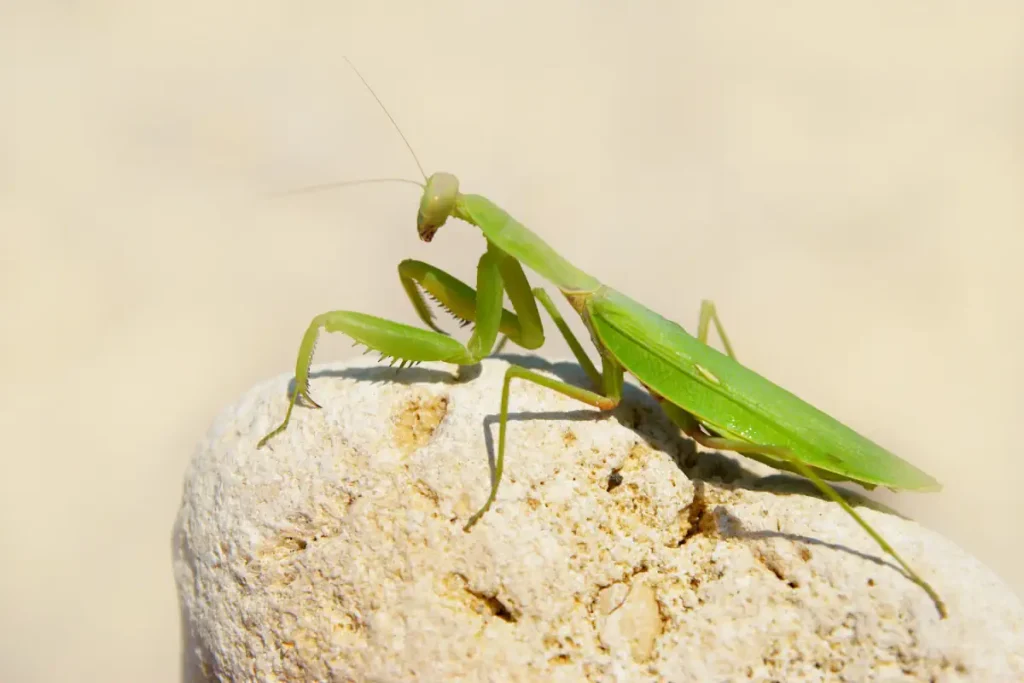
The world’s largest praying mantis was recorded at about 18 centimeters long, in Southern China, in 1929. According to Wikipedia, they can reach lengths of 20 cm.
As an apex carnivorous insect, the praying mantis feeds mainly on other insects. It is, however, documented that larger praying mantises are able to consume small reptiles and even small mammals or birds.
1. Phryganistria chinensis Zhao: 64 cm (25.2 inches) – the largest insect in the world.
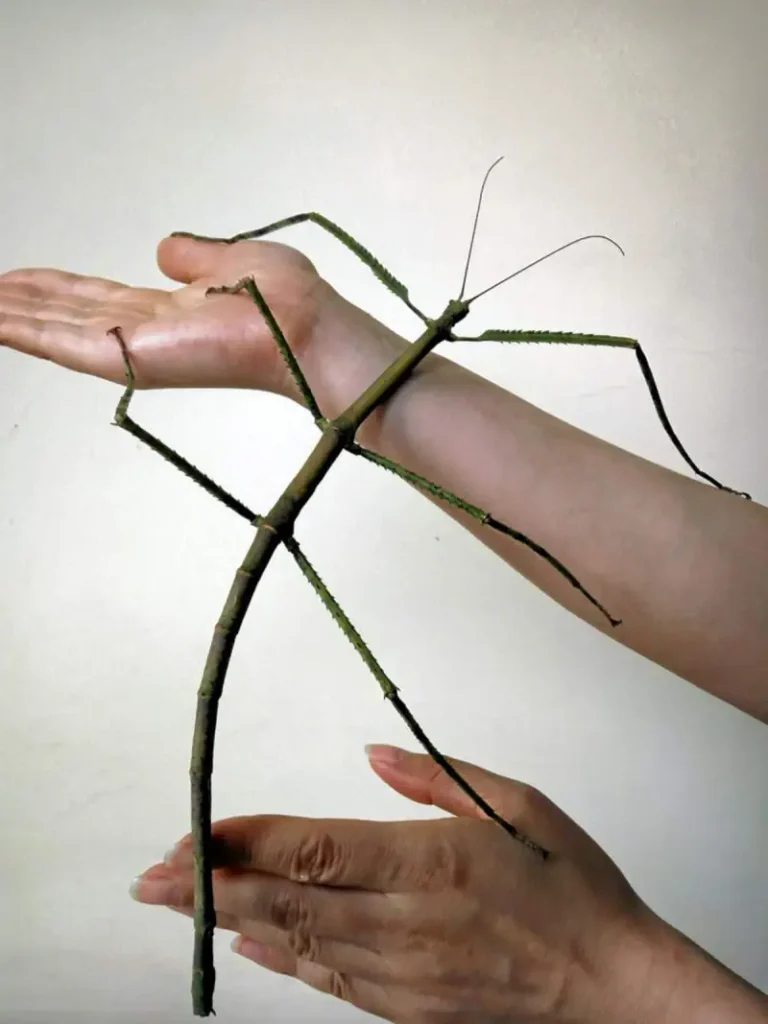
Until 2016, the longest insect in the world was Phobaeticus chani, a stick insect, with one specimen held in the Natural History Museum in London measuring 56.7 centimeters (22.3 in). Without legs fully extended, the body alone still measures an impressive 357 mm (14.1 in).
But, in 2016, a new species of stick insect in southern China has been declared the world’s longest bug: Phryganistria chinensis Zhao, at 62.4 cm (24.6 in). It is named after Zhao Li of the Insect Museum of West China, who spent years searching for the massive insect described by locals.
The insect returned with Zhao to the museum, where it laid 6 eggs. After hatching, even the smallest offspring cleared 26 centimeters.

The largest insect ever lived on Earth: Meganeuropsis permiana
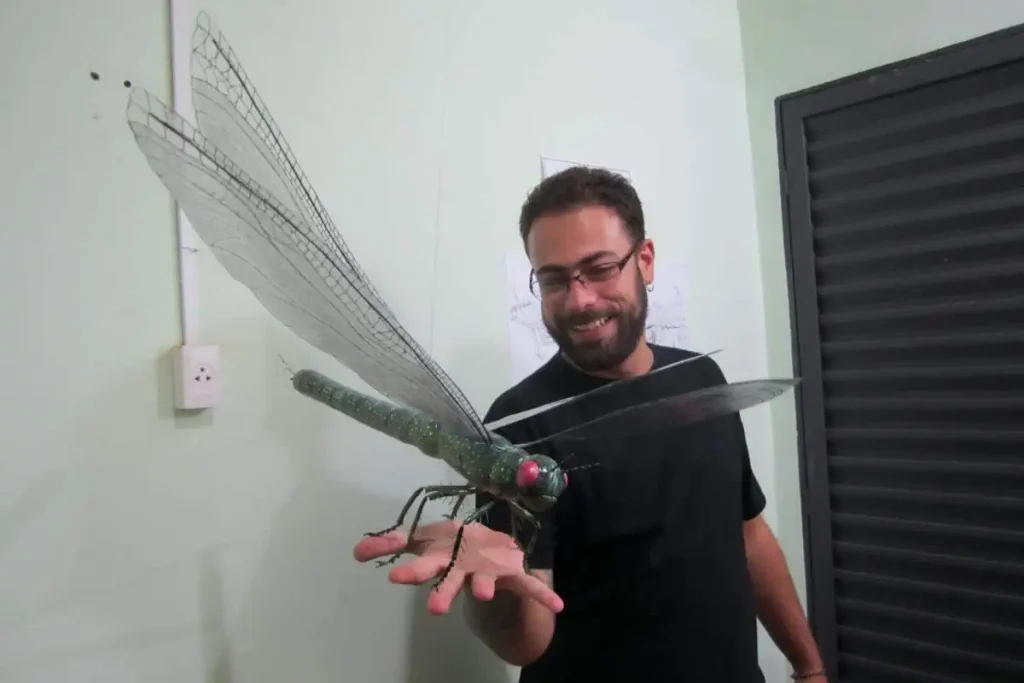
Meganeuropsis is an extinct genus of griffin fly, order Meganisoptera, known from the Early Permian (299-272 million years ago) of North America, and represents the biggest known insect of all time. The genus includes two described species:
Meganeuropsis permiana described in 1937 from Elmo, Kansas. It was one of the largest known insects that ever lived, with a reconstructed wing length of 330 millimeters (13 in), an estimated wingspan of up to 710 millimeters (28 in), and a body length from head to tail of almost 43 centimeters (17 in).
Meganeuropsis
Honorable mentions
Goliath beetle (Goliathus): up to 11 cm (4.3 in)
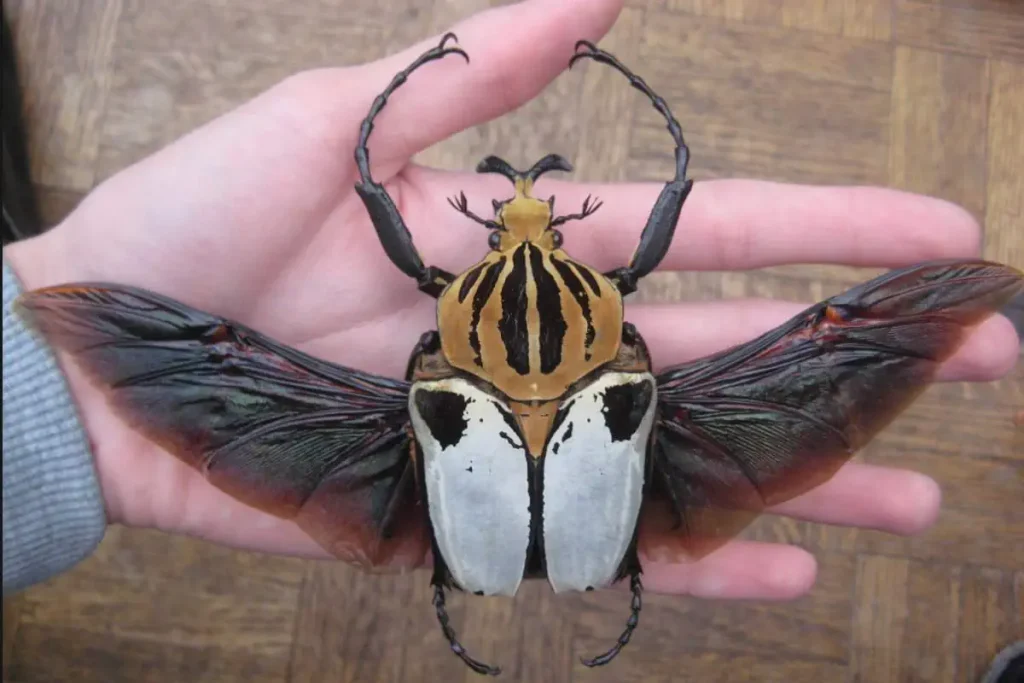
The name explains itself: named after the biblical giant Goliath, the Goliath beetle (Goliathus) are often rated as the biggest insect in the world, because they are really bulky. Males can grow up to 11 cm (4.3 in) in length.
One of the largest insects in the world with a heavy, bulky body, the Goliath beetle is a member of the subfamily Cetoniinae, within the family Scarabaeidae. They measure from 60-110 millimeters (2.4-4.3 inches) for males and 50-80 millimeters (2.0-3.1 inches) for females, as adults, and can reach weights of up to 80-100 grams (2.8-3.5 oz) in the larval stage, though the adults are only about half this weight.
They can be found in many of Africa’s tropical forests, where they feed primarily on tree sap and fruit. Little appears to be known of the larval cycle in the wild, but in captivity, Goliathus beetles have been successfully reared from egg to adult using protein-rich foods such as commercial cat and dog food.
The females range from dark brown to silky white, but the males are normally brown/white/black or black/white.
The largest cockroach
In length and wingspan, the largest cockroach is the South and Central American Megaloblatta. Its length and wingspan are up to 9.7 cm (3.8 in) and 18.5-20 cm (7.3-7.9 in) respectively. It lives in South and Central America.
Another contender for the longest cockroach is Blaberus
The heaviest is the Australian giant burrowing cockroach (Macropanesthia rhinoceros), also known as the rhinoceros cockroach and litterbug. They are native to Australia and can weigh up to 35 g (1.2 oz) and measure up to 8 cm (3.1 in) in length. Unlike some other cockroaches, they do not have wings and are not considered pests. It plays a vital part in the ecosystem by consuming dead leaves, eucalyptus in particular, and recycling other matter.
The largest fly in the world: Gauromydas heros (7 cm / 2.8 in)
Native to Brazil, Bolivia, and Paraguay, Gauromydas
The largest butterfly in the world: Queen Alexandra’s birdwing
Queen Alexandra’s birdwing (Ornithoptera
The largest moth in the world: Atlas moth
Moths comprise a group of insects related to butterflies. With a wingspan measuring between 25-30 cm (9.8-11.8 in), the Atlas moth (Attacus atlas) is usually quoted as the largest moth on Earth. It is endemic to the forests of Asia.
However, there are two other
It has a wingspan of 27 cm (11 in), making it the largest moth found in Australia, and its wings have the largest documented surface area (300 square centimeters) of any living insect.

The largest hornet: Asian Giant Hornet
The Asian giant hornet (Vespa
The largest wasps: Tarantula Hawk and Giant Scoliid Wasp
The giant scoliid wasp has a wingspan of 11.6 cm (4.57 in). It is a parasitoid of the Atlas beetle, paralyzing the beetle with its sting and laying its egg on it. The wasp then buries the beetle underground for the larvae to hatch with the hatched larvae feeding on the still-living host.
Similar to the giant scoliid wasp, the tarantula hawk hunts tarantulas. They use their sting to paralyze their prey before dragging it to a brood nest as living food; a single egg is laid on the prey, hatching to a larva that eats the still-living prey. They are up to 5 cm (2 in) long.
The largest spiders in the world
Spiders are technically not insects. Unlike insects, spiders do not have antennae.
The largest spider by leg span is the giant huntsman spider (scientific name Heteropoda maxima), which can reach up to 1 ft (30 cm).
The heaviest spider is the Goliath birdeater (Theraphosa
The “bird-eating” definition derives from an early 18th-century copper engraving by the German-born naturalist and scientific illustrator Maria Sibylla Merian (2 April 1647 – 13 January 1717) that shows one eating a hummingbird. Despite the name, it rarely preys on birds. Its diet consists primarily of other large arthropods, worms, and amphibians.
They have a leg span of up to 28 cm (11 in), a body length of up to 11.9 cm (4.7 in), and can weigh up to 175 g (6.2 oz).
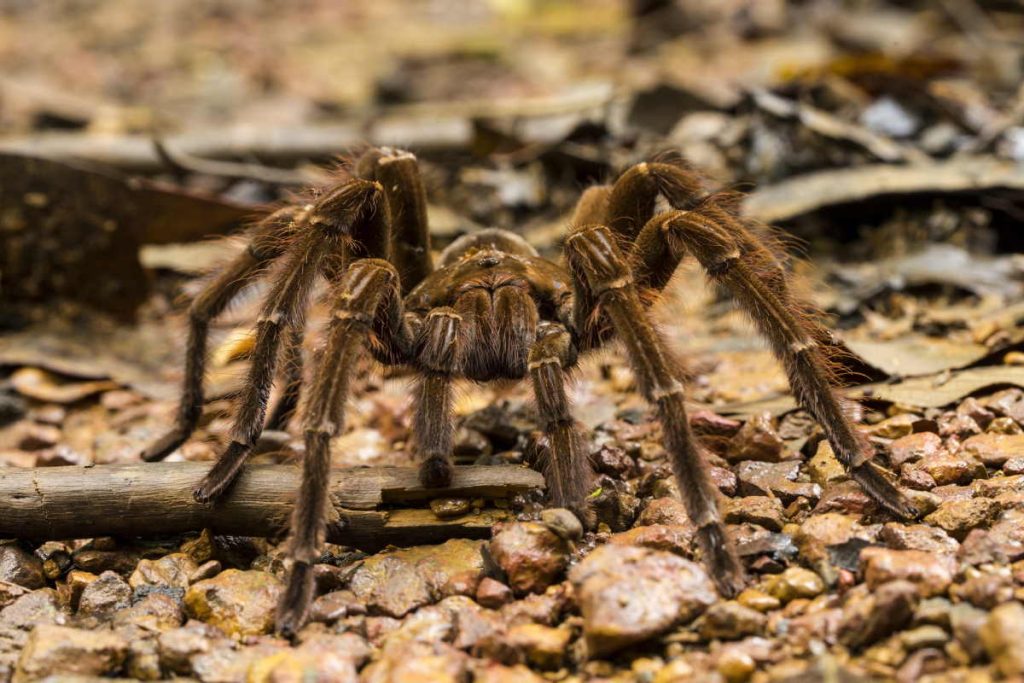
Related: 10 Biggest Spiders in the World
Notes
1. About the largest insects list
Preparing such a list is not an easy task. Because, how can you identify the “large”? It is a relative term: if you mean the “bulkiest” by largest, for instance, this title may go to the Goliath beetle (Goliathus), which is among the largest insects on Earth, if measured in terms of size, bulk, and weight. They measure from 60-110 millimeters (2.4-4.3 in) for males and 50-80 millimeters (2.0-3.1 in) for females, as adults, and can reach weights of up to 80-100 grams (2.8-3.5 oz) in the larval stage, though the adults are only about half this weight.
Or maybe the Actaeon beetle (Megasoma actaeon) claims the title, which is a rhinoceros beetle, a member of the Scarabaeidae family. They can be up to 7 centimeters (2.8 in) across, with a body length of up to 13.5 cm (5.4 in) long by 4 cm (1.6 in) thick.
If you are looking for the “heaviest”, check out the Giant Weta, the heaviest insect in the world. A female giant weta filled with eggs can reach up to 70 grams!
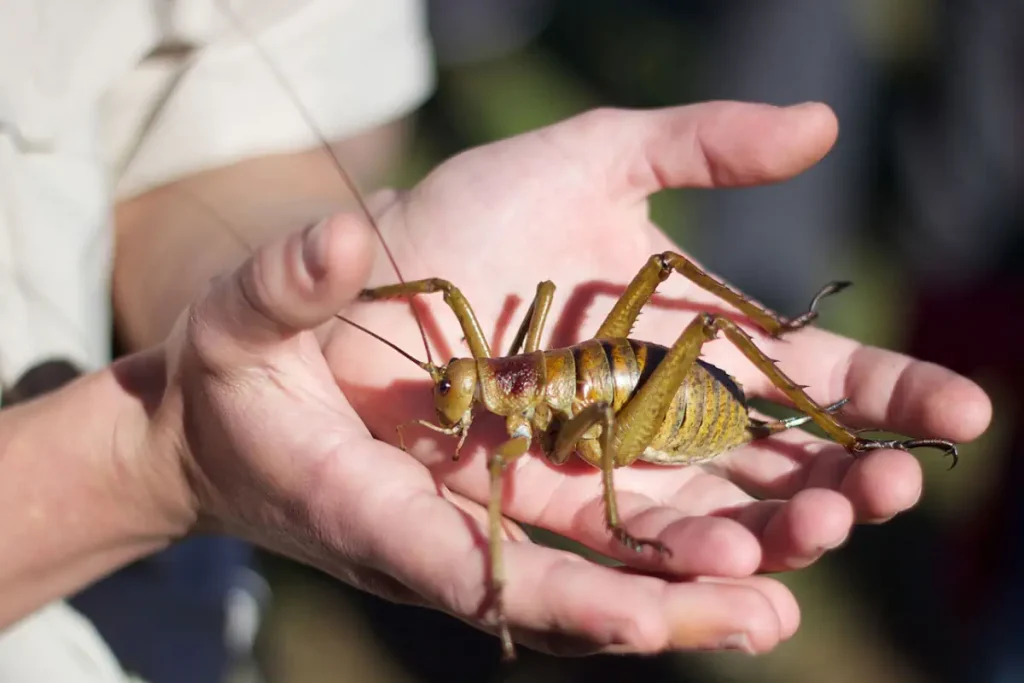
The largest wingspans? Then the title goes to Queen Alexandra’s birdwing, which is the largest butterfly in the world, with females reaching wingspans up to 1 foot (30 cm) wide.
The longest? In May 2016, it was reported that Phryganistria chinensis Zhao, discovered in Liuzhou, China, in 2014, was the world’s longest-known insect at 62.4 centimeters (24.6 in). According to Wikipedia, the rare titan beetle (Titanus giganteus) from northeastern South America is often considered the largest insect, with a maximum known body length of just over 16.7 cm (6.6 in).
But, even if you don’t count the legs, Phryganistria still measures an impressive 357 mm (14.1 in), way longer than the “titan”. But it’s very thin, so not as impressive as the titan beetle.
I decided to make my list by the overall length, including extensions like horns, antennae, etc.
2. Square-cube law on Biomechanics
The square-cube law (or cube-square law) is a mathematical principle, applied in a variety of scientific fields, which describes the relationship between the volume and the area as a shape’s size increases or decreases. It was first described in 1638 by Galileo Galilei in his Two New Sciences as the “…ratio of two volumes is greater than the ratio of their surfaces.”
This principle states that, as a shape grows in size, its volume grows faster than its surface area. When applied to the real world this principle has many implications which are important in fields ranging from mechanical engineering to biomechanics. It helps explain phenomena including why large mammals like elephants have a harder time cooling themselves than small ones like mice, and why building taller and taller skyscrapers is increasingly difficult.
As was elucidated by the British-born Indian scientist J. B. S. Haldane (5 November 1892 – 1 December 1964), large animals do not look like small animals: an elephant cannot be mistaken for a mouse scaled up in size. This is due to allometric scaling: the bones of an elephant are necessarily proportionately much larger than the bones of a mouse because they must carry proportionately higher weight.
To quote from Haldane’s seminal essay On Being the Right Size, “…consider a man 60 feet high… Giant Pope and Giant Pagan in the illustrated Pilgrim’s Progress… These monsters.. weighed 1000 times as much as Christian. Every square inch of a giant bone had to support 10 times the weight borne by a square inch of human bone. As the human thigh bone breaks under about 10 times the human weight, Pope and Pagan would have broken their thighs every time they took a step.”
Consequently, most animals show allometric scaling with increased size, both among species and within a species. The giant creatures seen in monster movies (e.g., Godzilla or King Kong) are also unrealistic, as their sheer size would force them to collapse.
Sources
- Queen Alexandra’s Birdwing Butterfly on enchantedlearning.com
- theprayingmantis.org
- List of Largest Insects on Wikipedia
- Goliathus on Wikipedia
- Belostomatidae on Wikipedia
- Atlas beetle on Wikipedia
- Actaeon beetle on Wikipedia
- Titan beetle on Wikipedia
- Hercules beetle on Wikipedia
- Square-cube law on Wikipedia
- Macrodontia
cervicornis on Wikipedia - Phobaeticus
chani on Wikipedia - “World’s longest insect is two feet long” on Popular Science
- Meganeuropsis on Wikipedia
- Moon Landings: All-Time List [1966-2025] - February 2, 2025
- What Is Max-Q and Why Is It Important During Rocket Launches? - January 16, 2025
- Top 10 Tallest Rockets Ever Launched [2025 Update] - January 16, 2025
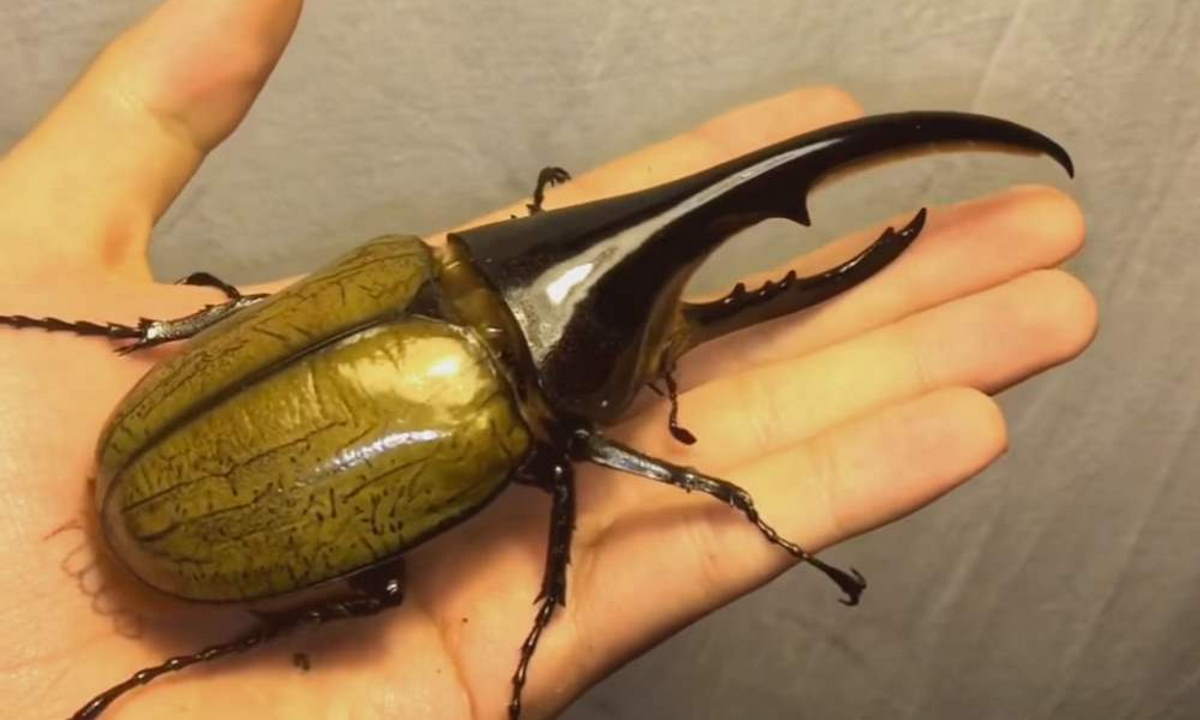
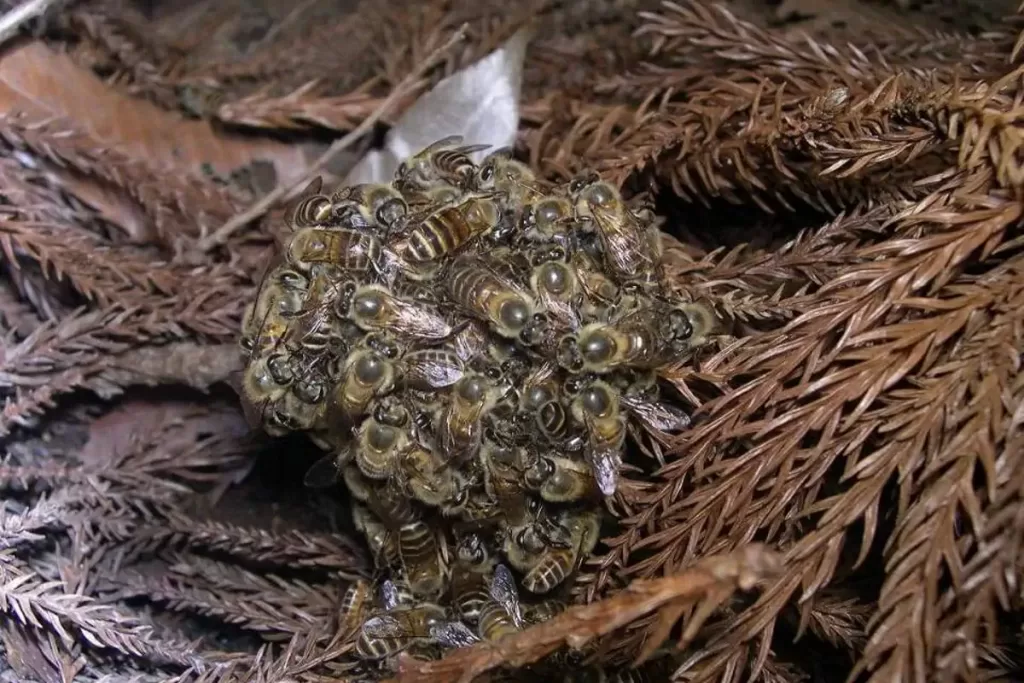
7 replies on “10 Largest Insects in the world”
I saw this morning a large insect that looked like a brown grasshopper but it was 12 in high and 12 in long and have no idea what it was
It was a Dave grasshopper, they don’t chirp like usual grasshoppers but instead randomly call out DAVE
[…] of arboreal snakes survive on rats, mice and birds. A few also eat other reptiles and amphibians. Large insects are also meals for some small […]
Well. I am liking the insects keyword to your article. Nice one!
Good information.
[…] The biggest praying mantis is the Chinese praying mantis located in southern china which can grow up to … […]
why did i even click on this site i really regret it
AND I HATE BUGS